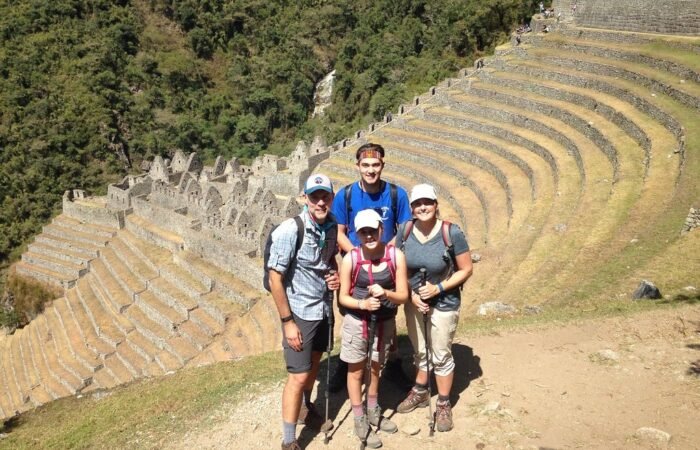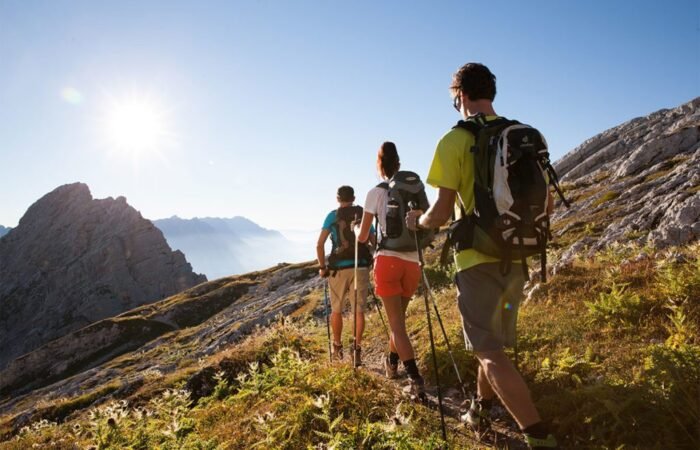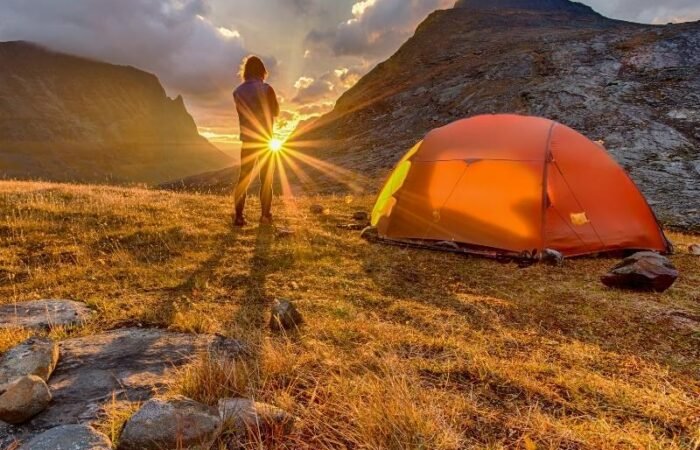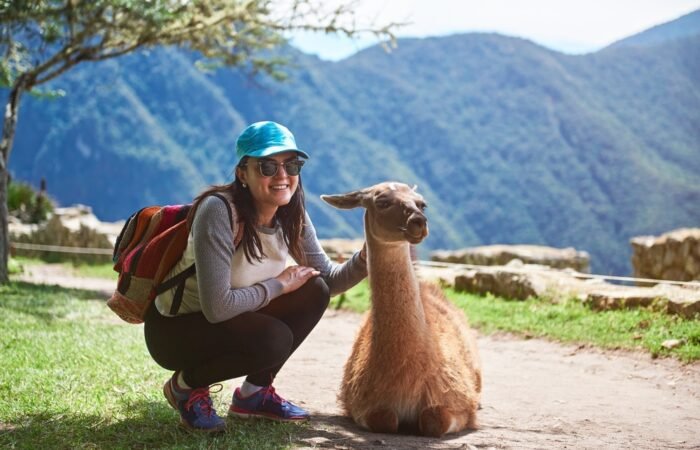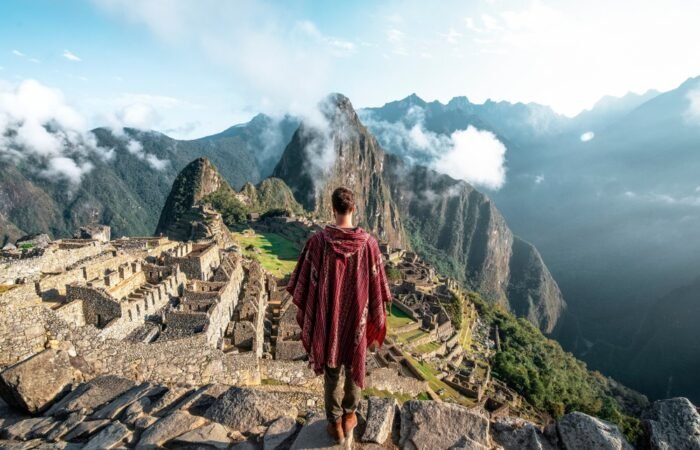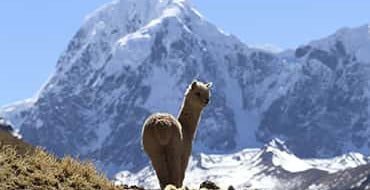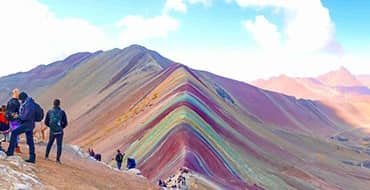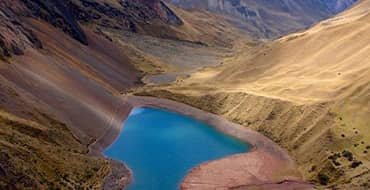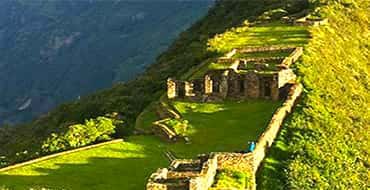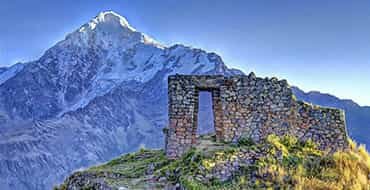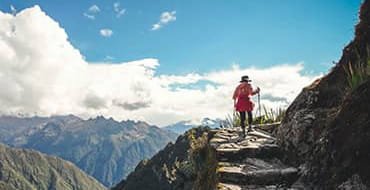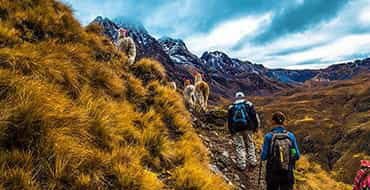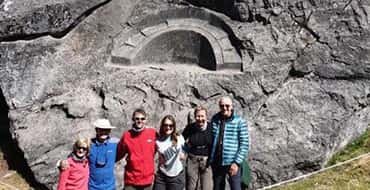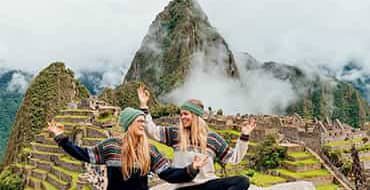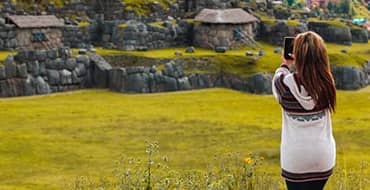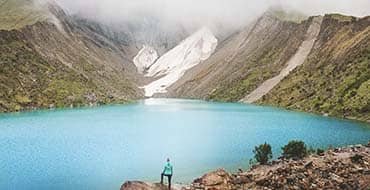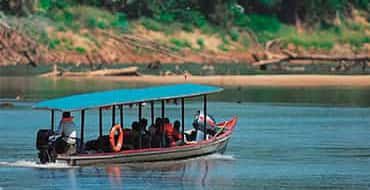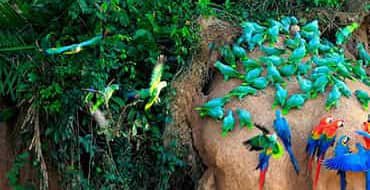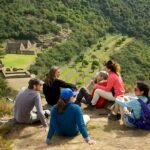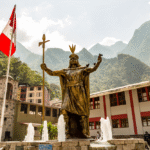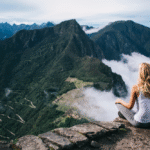Do you want to experience Machu Picchu in a way that goes beyond the classic postcard view? Machu Picchu Circuit 3, also known as the Royalty Route, combines the best of history, spirituality, and adventure. On this route, you’ll explore the lower section of the sanctuary, where the Incas built sacred temples and noble residences, as well as the entrances to two of the most iconic mountains: Huayna Picchu and Huchuy Picchu.
In this guide, you’ll discover why Circuit 3 is considered the most adventurous of all, which routes you can choose from, its main highlights, and all the practical details—prices, capacity limits, and tips—to help you make the most of this once-in-a-lifetime experience at the world wonder.
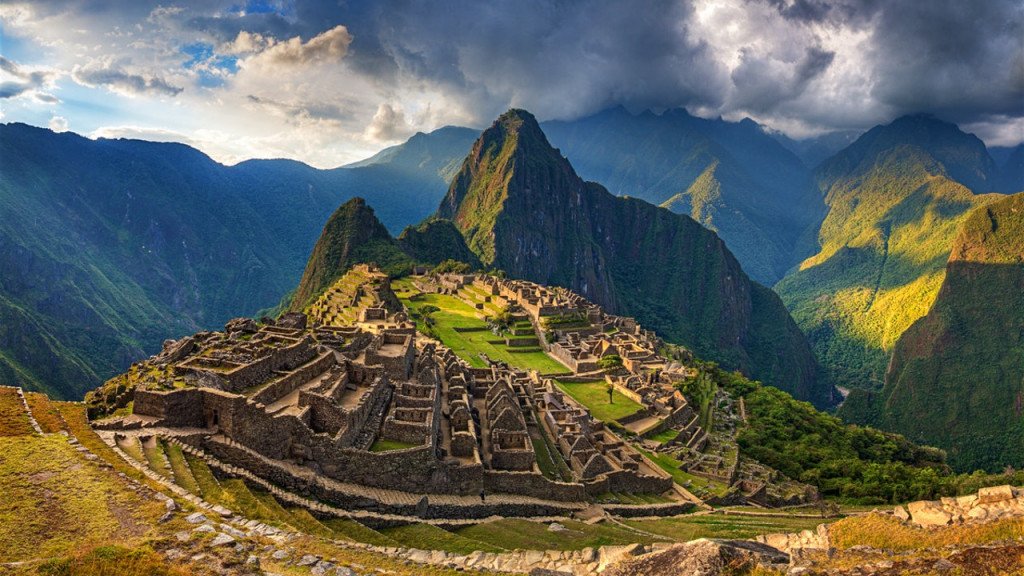
What are the Machu Picchu Circuits?
The Machu Picchu circuits are the official routes that allow you to explore the Inca citadel in a safe, organized, and environmentally responsible way. Since 2017, Peru’s Ministry of Culture has implemented this system to protect the cultural and natural heritage while also improving the visitor experience.
With the 2024 update, there are now three circuits and 10 different routes to explore the wonder of the world. Each circuit offers unique perspectives, hidden gems, and experiences designed for different types of travelers. Get ready to dive into the must-do option for every true adventurer: Circuit 3 – Machu Picchu Royalty.
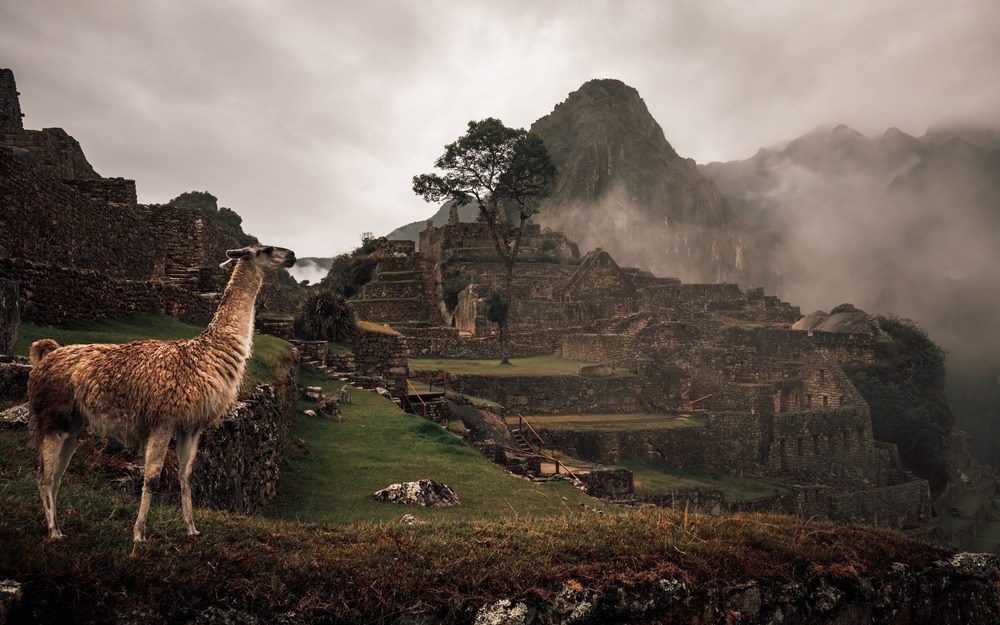
Machu Picchu Circuit 3: The Royalty Route
Machu Picchu’s Circuit 3, known as the Royalty Route, takes you through the lower part of the citadel, combining sacred temples and noble residences. Its main highlight is its connection to Huayna Picchu Mountain and its legendary cave, as well as Huchuy Picchu Mountain, the smaller peak overlooking the Inca city.
This circuit features one accessible route and three more challenging ones that lead toward the sacred mountains. Along the way, you’ll see how the Incas, as early as the 15th century, managed to integrate architecture and nature in perfect harmony—building incredible structures in nearly inaccessible places.
Thanks to this mix of culture and adventure, Circuit 3 is perfect for adventurers, Inca history enthusiasts, and photography lovers. It promises an experience full of adrenaline, history, and breathtaking views of the world wonder.
The Routes of Machu Picchu Circuit 3
In this section, you’ll find a detailed look at the different options within Machu Picchu Circuit 3, so you can choose the route that best fits your travel style and enjoy an unforgettable journey at this world heritage site.
Route 3A: Huayna Picchu Mountain
This is the ideal route if you’re seeking a mix of history, culture, and adrenaline. Huayna Picchu Mountain, with its more than 1,600 stone steps and a 984 ft (300 m) climb, is the most challenging of Machu Picchu’s three sacred mountains. It rewards hikers with jaw-dropping panoramic views, steep paths, and narrow trails.
What’s included in the Huayna Picchu Mountain Route?
The route begins in the agricultural area, where you’ll see Inca terraces and their ingenious hydraulic systems. You’ll then pass by landmarks such as the Temple of the Sun, the Inca’s House, the Three Doorways sector, and the Sacred Rock. From there, the climb to the top of Huayna Picchu begins. On the way back, you’ll explore highlights like the Temple of the Condor, Pisonay Square, and more.
Key details of the route:
- Daily capacity: Limited, so booking well in advance is highly recommended (see the Ticket Availability by Season section).
- Total duration: Up to 6 hours, including ascent, time at the summit, and descent (depending on your fitness level).
- Distance: Approximately 2.4 km (1.49 miles).
- Difficulty: High. Good physical condition is required due to the steep climb and uneven terrain.
- Entry times: 7:00 a.m. and 9:00 a.m.

Important: To hike Route 3A – Huayna Picchu Mountain, you must be 18 years or older, to protect your safety.
Machu Picchu Entrance Ticket Prices 2026: Huayna Picchu Mountain Route
| General | Undergraduate Student** | Minors (3–17 yearsold) | Children under 3 years old | People with disabilities | Warveterans | |
| Foreign | S/. 200.00 | S/. 125.00 | S/. 118.00 | S/. 0.00 | (See note ) | (See note ) |
| Peruvian | S/. 112.00 | S/. 80.00 | S/. 80.00 | S/. 0.00 | S/. 100.00 | S/. 0.00 |
| CAN countries or foreign resident* | S/. 112.00 | S/. 80.00 | S/. 80.00 | S/. 0.00 | (See note ) | (See note ) |
| Cusco citizen | S/. 112.00 | S/. 80.00 | S/. 80.00 | S/. 0.00 | S/. 100.00 | S/. 0.00 |
Note: The access fee for people with disabilities and war veterans may vary depending on each visitor’s specific situation. Ticket prices are determined by the category you belong to: general public, undergraduate student, minor, among others.
If you are a citizen of Bolivia, Colombia, or Ecuador, you are part of the Andean Community of Nations (CAN) and therefore qualify for a special discount to visit Machu Picchu.
** If you are currently pursuing undergraduate studies, you must present a valid university ID issued in your country at the time of purchase and again upon entry.
Route 3B – Designed Royalty
Can you imagine walking through the temples and residences once inhabited by the Inca royalty? The Machu Picchu Route 3B, also known as Designed Royalty, allows you to discover some of the citadel’s most representative architectural treasures. This itinerary blends history, spirituality, and breathtaking landscapes. It is the perfect option for those who want to explore the highlights of the world wonder without long hikes, making it accessible for visitors of all ages and for those with disabilities.
hat’s included in the Designed Royalty Route?
The Designed Royalty Route begins in the agricultural zone, where you’ll enjoy a panoramic view of Machu Picchu and capture the classic photo of this circuit. From there, the path continues through the Temple of the Sun, the Inca’s House, the Ceremonial Fountains, the Three Doorways sector, and the Temple of the Condor.
Key details of the tour:
- Daily capacity: Ample, thanks to the multiple entry times (see the Ticket Availability by Season section).
- Total duration: Approximately 2 hours and 30 minutes.
- Distance: About 1.3 km (0.81 miles).
- Difficulty: Low. Suitable for all ages and fitness levels.
- Entry times: 10 time slots available, from 6:00 a.m. to 3:00 p.m.
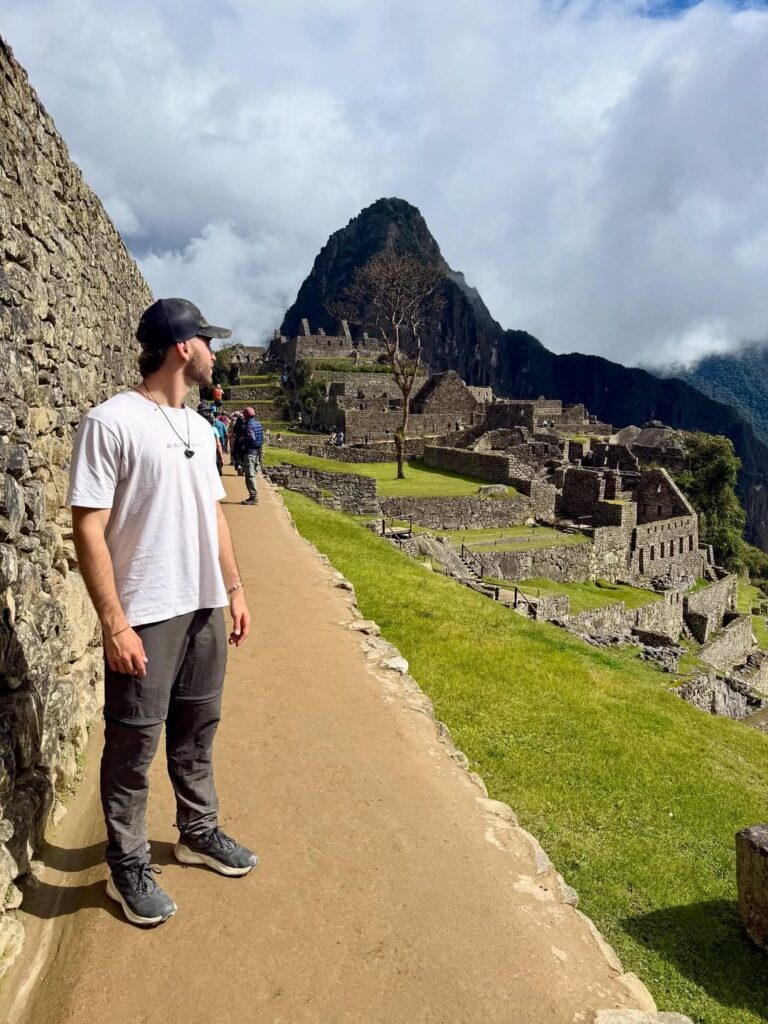
Machu Picchu Entrance Ticket Prices 2026: Designed Royalty Route
| General | Undergraduate student ** | Minor (3-17 years old) | Children under 3 years old | People with disabilities | War veterans | |
| Foreign | S/. 152.00 | S/. 77.00 | S/. 70.00 | S/. 0.00 | (See note ) | (See note ) |
| Peruvian | S/. 64.00 | S/. 32.00 | S/. 32.00 | S/. 0.00 | S/. 76.00 | S/. 0.00 |
| CAN countries or foreign resident* | S/. 64.00 | S/. 32.00 | S/. 32.00 | S/. 0.00 | (See note ) | (See note ) |
| Cusco citizen | S/. 64.00 | S/. 32.00 | S/. 32.00 | S/. 0.00 | S/. 76.00 | S/. 0.00 |
Note: The access fee for people with disabilities and war veterans may vary depending on each visitor’s specific circumstances. Ticket prices are determined by the category you belong to: general public, undergraduate student, minor, among others.
If you are a citizen of Bolivia, Colombia, or Ecuador, you are part of the Andean Community of Nations (CAN) and therefore qualify for a special discount to visit Machu Picchu.
** If you are currently pursuing undergraduate studies, you must present a valid university ID issued in your country at the time of purchase and again upon entry.
Remember that this route is open to visitors of all ages. However, this ticket does not include additional hikes such as Huayna Picchu, Machu Picchu Mountain, or Huchuy Picchu. It’s also important to note that this ticket should be reserved well in advance.
Route 3C – Great Cavern
Looking for a unique experience that combines history, adventure, trekking, and a deep connection with nature? The Great Cavern Route leads to a natural cave hidden deep within Huayna Picchu Mountain, also known as the Temple of the Moon—a mystical site that appears to be frozen in time.
What’s included in the Great Cavern Route?
The Route 3C – Great Cavern begins in the agricultural zone, where you’ll see the impressive Inca terraces and capture a classic photo close to Machu Picchu’s urban sector. From there, the route continues through the Temple of the Sun, the Inca’s House, the Ceremonial Fountains, and the Three Doorways sector, before heading deep into the Great Cavern. On the return journey, you’ll also visit the Temple of the Condor.
Key details of the tour
- Daily capacity: Limited, so it is highly recommended to book well in advance (see the Ticket Availability by Season section).
- Total duration: Up to 7 hours, including ascent, time at the site, and descent (depending on your physical condition).
- Distance: Approximately 3 km (1.86 miles).
- Difficulty: High. Good physical condition is required due to the steep climb and uneven terrain.
- Entry times: 7:00 a.m. and 8:00 a.m.
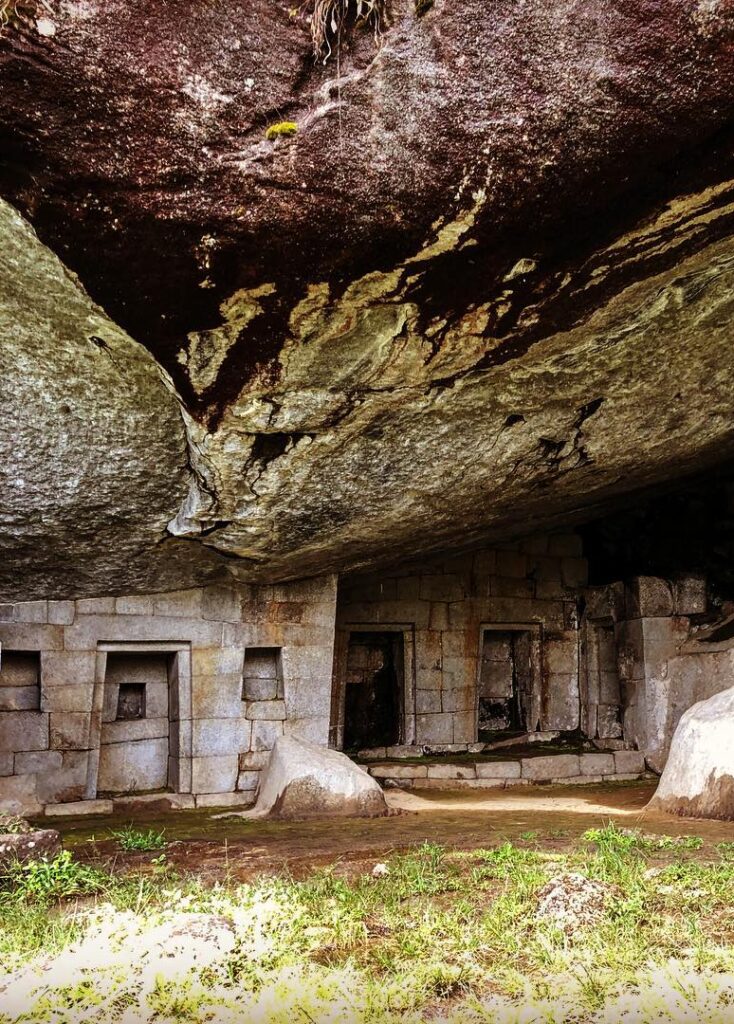
Important: Keep in mind that the Route 3C – Great Cavern is only available during the high season (see the Ticket Availability by Season section in Circuit 3), and participants must be 18 years or older.
Machu Picchu Entrance Ticket Prices 2026: Great Cavern Route
| General | Undergraduate student ** | Minor (3-17 years old) | Children under 3 years old | People with disabilities | War veterans | |
| Foreign | S/. 200.00 | S/. 125.00 | S/. 118.00 | S/. 0.00 | (See note ) | (See note ) |
| Peruvian | S/. 112.00 | S/. 80.00 | S/. 80.00 | S/. 0.00 | S/. 100.00 | S/. 0.00 |
| CAN countries or foreign resident* | S/. 64.00 | S/. 32.00 | S/. 32.00 | S/. 0.00 | (See note ) | (See note ) |
| Cusco citizen | S/. 64.00 | S/. 32.00 | S/. 32.00 | S/. 0.00 | S/. 76.00 | S/. 0.00 |
Note: The access fee for people with disabilities and war veterans may vary depending on each visitor’s specific circumstances. Ticket prices are determined by the category you belong to: general public, undergraduate student, minor, among others.
If you are a citizen of Bolivia, Colombia, or Ecuador, you are part of the Andean Community of Nations (CAN) and therefore qualify for a special discount to visit Machu Picchu.
** If you are currently pursuing undergraduate studies, you must present a valid university ID issued in your country at the time of purchase and again upon entry.
Route 3D – Huchuy Picchu
The Machu Picchu Route 3D combines Inca culture with a light hike to the smallest summit of the citadel: Huchuy Picchu. Standing at 2,497 meters (8,192 ft) above sea level, this mountain offers a unique perspective of the world wonder – less known and less crowded than its larger sister, Huayna Picchu.
What’s included in the Huchuy Picchu Route?
The Route 3D – Huchuy Picchu, available only during the high season, begins in the agricultural zone and passes by the Temple of the Sun, the Inca’s House, the Ceremonial Fountains, and the Three Doorways sector. The trail then climbs to the summit of Huchuy Picchu, where you’ll enjoy breathtaking panoramic views of Machu Picchu. On the return, the route includes a visit to the Temple of the Condor.
Key details of the tour
- Daily capacity: Limited, so it is highly recommended to book well in advance (see the Ticket Availability by Season section).
- Total duration: Up to 3 hours and 30 minutes, including ascent, time at the summit, and descent (depending on your physical condition).
- Distance: Approximately 1.7 km (1.05 miles).
- Difficulty: Moderate to high. Good physical condition is required for the ascent.
- Entry times: 9:00 a.m. and 11:00 a.m.
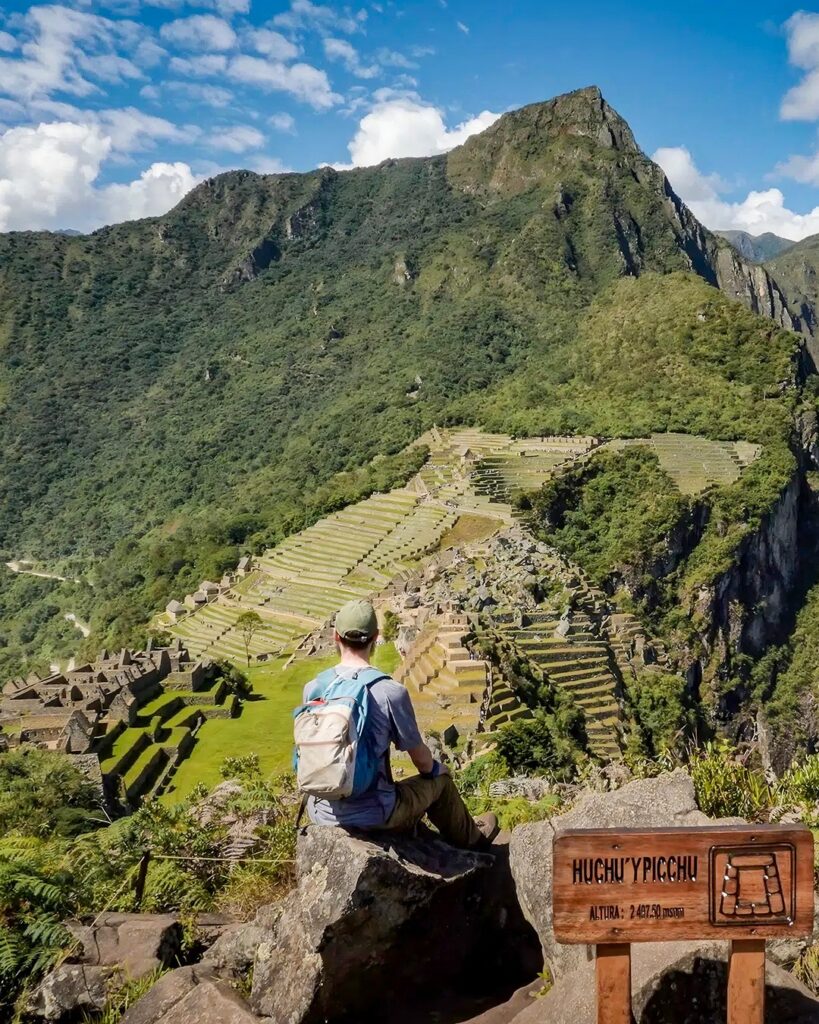
Important: Keep in mind that the Route 3D – Huchuy Picchu is only available during the high season (see the Ticket Availability by Season section in Circuit 3), and participants must be 18 years or older.
Machu Picchu Entrance Ticket Prices 2026: Huchuy Picchu Route
| General | Undergraduate student ** | Minor (3-17 years old) | Children under 3 years old | People with disabilities | War veterans | |
| Foreign | S/. 152.00 | S/. 77.00 | S/. 70.00 | S/. 0.00 | (see note) | (see note) |
| Peruvian | S/. 64.00 | S/. 32.00 | S/. 32.00 | S/. 0.00 | S/. 76.00 | S/. 0.00 |
| CAN countries or foreign resident* | S/. 64.00 | S/. 32.00 | S/. 32.00 | S/. 0.00 | (see note) | (see note) |
| Cusco citizen | S/. 64.00 | S/. 32.00 | S/. 32.00 | S/. 0.00 | S/. 76.00 | S/. 0.00 |
Note: The access fee for people with disabilities and war veterans may vary depending on each visitor’s specific circumstances. Ticket prices are determined by the category you belong to: general public, undergraduate student, minor, among others.
If you are a citizen of Bolivia, Colombia, or Ecuador, you are part of the Andean Community of Nations (CAN) and therefore qualify for a special discount to visit Machu Picchu.
** If you are currently pursuing undergraduate studies, you must present a valid university ID issued in your country at the time of purchase and again upon entry.
Archaeological Sites You’ll Find on Machu Picchu Circuit 3

Agricultural Zone
The Agricultural Zone of Machu Picchu stands out for its impressive terraces that descend from the upper to the lower part of the Inca citadel. These terraces showcase the Incas’ advanced agricultural knowledge. More than 500 years ago, corn, tubers, coca, and medicinal plants were cultivated here, ensuring both the sustenance of the citadel and the resources needed for sacred rituals.

Sacred Fountains
The Sacred Fountains represent the sophisticated hydraulic system developed by the Incas more than 500 years ago. Their complex design supplied water to the estimated one thousand inhabitants of Machu Picchu, while also irrigating the agricultural zone and serving ceremonial purposes. The fountains located next to the Temple of the Sun and the Royal Palace stand out for their fine stonework, highlighting their practical and spiritual importance.
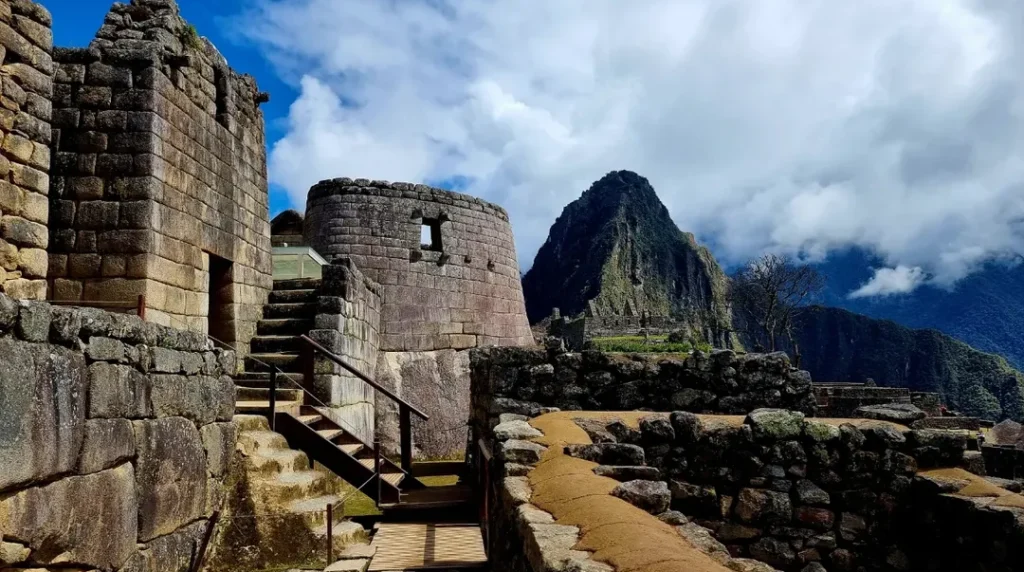
Temple of the Sun
The Temple of the Sun is one of Machu Picchu’s most sacred spaces. Built on a large rock, it features a semicircular design with windows perfectly aligned with the summer and winter solstices. Below lies the so-called Royal Tomb; it is believed this area was reserved for Inca nobility for burials and rituals. The temple reflects the close connection between Inca architecture, astronomy, and spirituality.
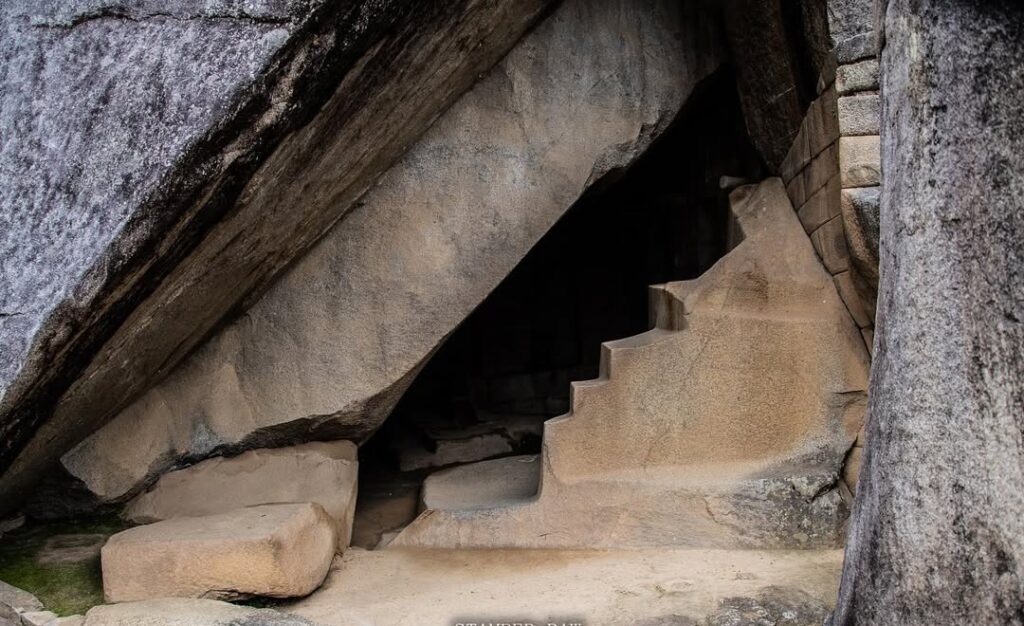
Royal Tomb
The Royal Tomb, located directly beneath the Temple of the Sun and aligned with its tower, is one of the most sacred sites at Machu Picchu. This mausoleum, carved into solid rock, is thought to have housed members of the Inca elite, including priests and possibly the Inca himself.
Its walls display carvings and sacred symbols linked to Pachamama, reflecting the site’s spiritual significance. Inside, precise funerary niches and elements that may have supported ceremonial ornaments can still be seen. The Royal Tomb brings together architecture, religion, and Andean worldview, making it one of the citadel’s holiest spaces.
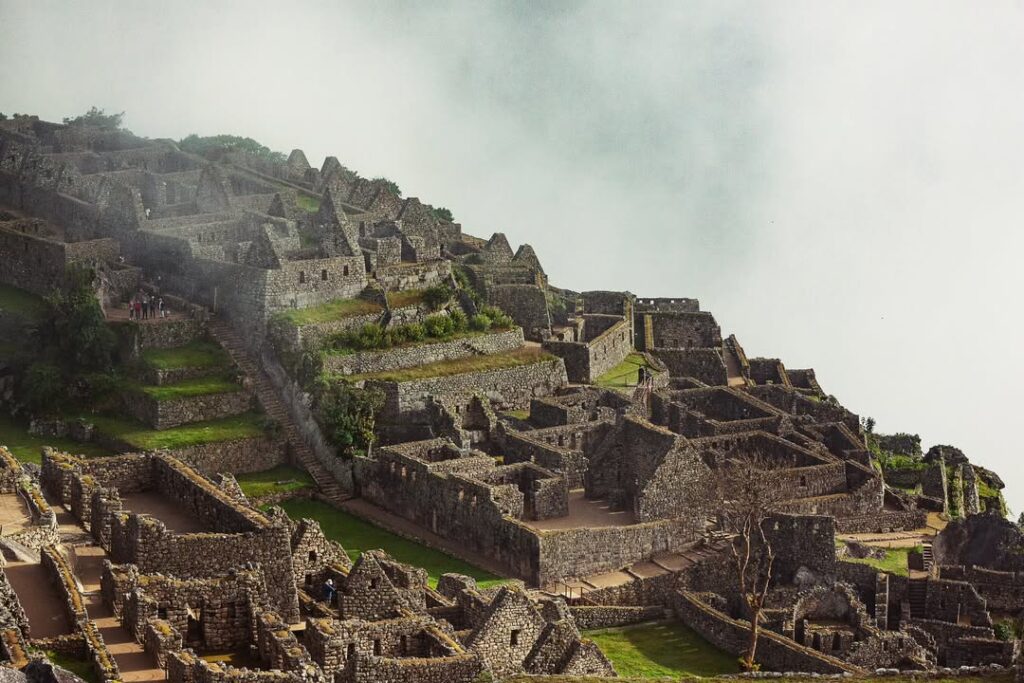
The Three Doorways Sector
The Three Doorways Sector features 18 structures that likely served as homes, workshops, or storage spaces for the working class. It also includes three courtyards and three symmetrical doorways, giving the area its name and making it a remarkable example of Inca urban planning. Well-preserved, this sector also offers excellent photo opportunities.

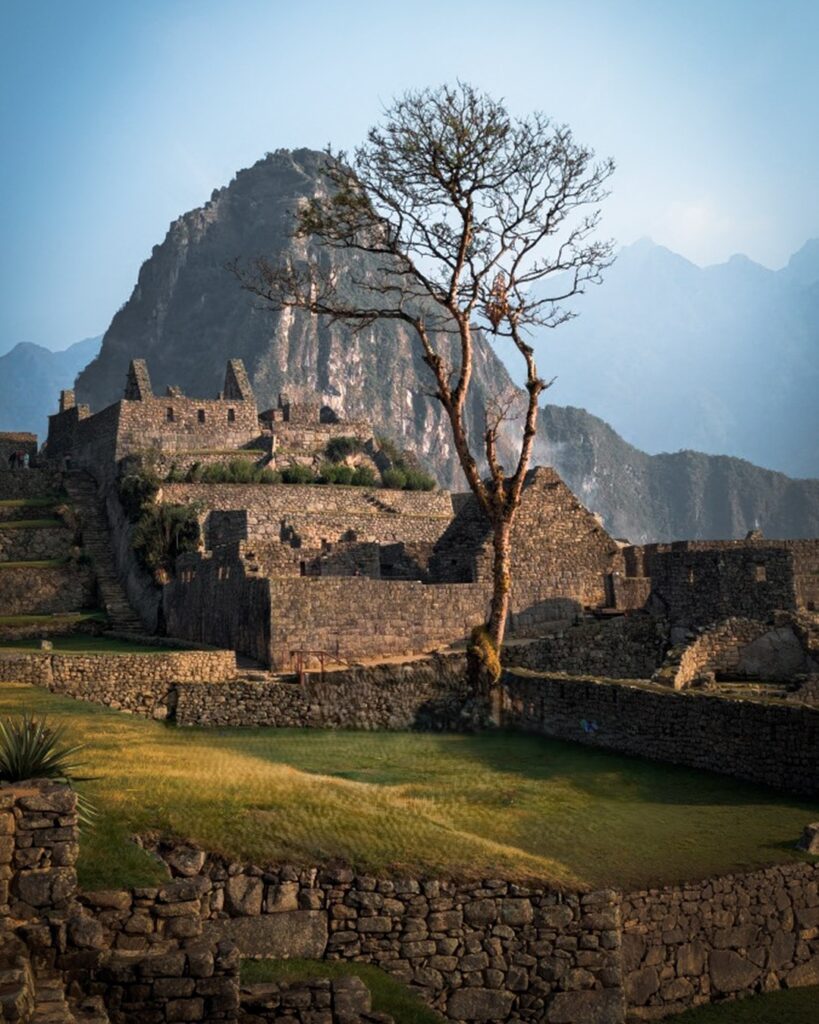
Pisonay Square
Pisonay Square is one of the largest open spaces in Machu Picchu, serving as both a social and ceremonial center. It is named after the Pisonay tree that still grows in its center, making it an icon for visitors. From this strategic spot, several key areas of the citadel were accessible, reflecting Inca urban organization and the integration of nature into their constructions.

Sacred Rock
The Sacred Rock is a massive granite block over 3 meters tall, considered a highly spiritual ceremonial site. Its alignment with the mountain behind it reinforces the concept of Yanantin, the Inca philosophy of duality and complementarity as guiding principles of life. Today, many visitors regard it as a place full of energy.
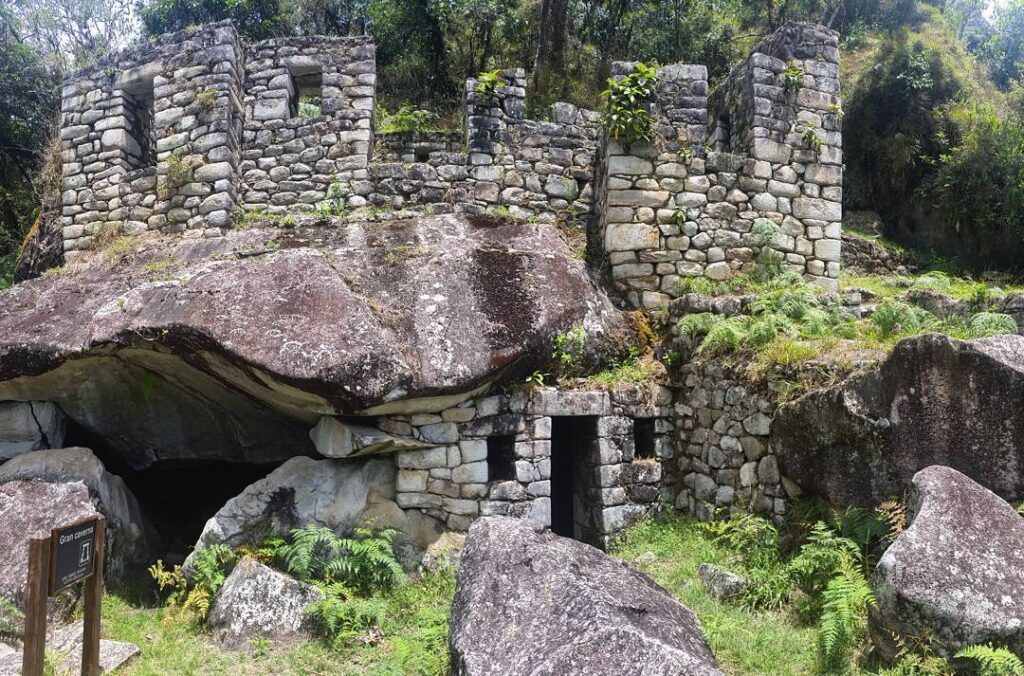
Temple of the Moon
The Temple of the Moon, also known as the Great Cavern, is an extraordinary stone structure carved within a natural cave on Huayna Picchu Mountain. Reaching this hidden gem takes about two hours and is one of the most demanding hikes in the world wonder. Although its exact function remains a mystery, researchers believe it may have served as a ceremonial or ritual space.
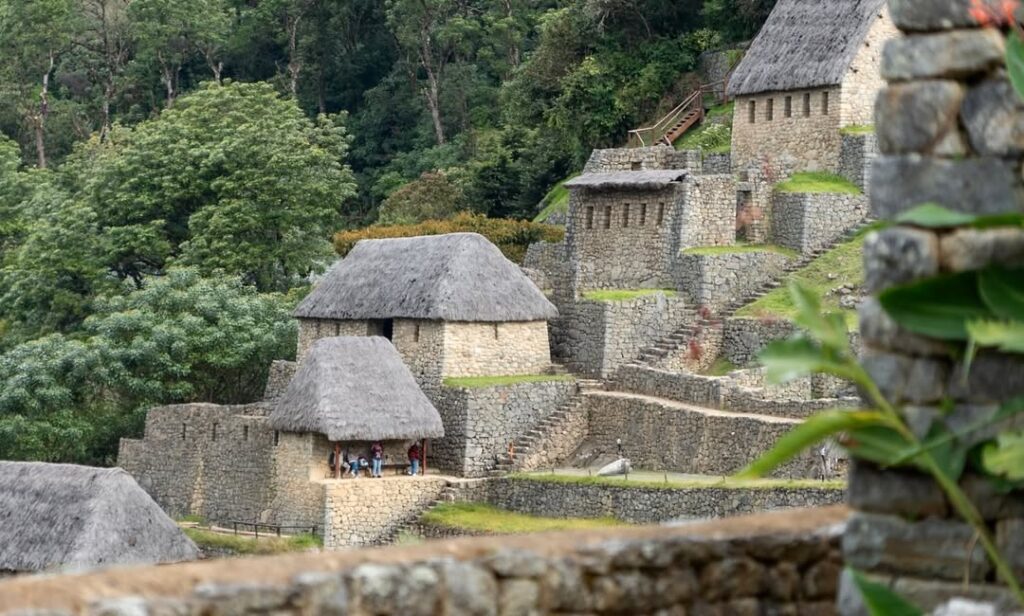
Eastern Qolqas
The Eastern Qolqas were Inca storage houses located in the lower part of Machu Picchu. Here, food, medicinal plants, and tools were preserved. Built in strategic spots with airflow that kept goods fresh and dry, they demonstrate the Inca Empire’s advanced organization and efficiency.
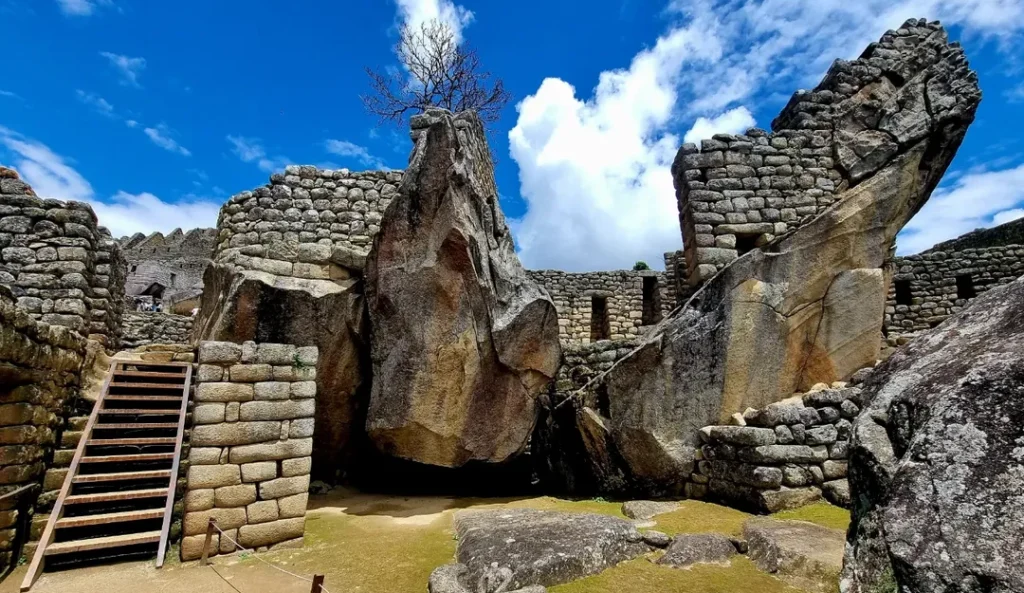
Temple of the Condor
The Temple of the Condor is one of the most symbolic and impressive structures in Machu Picchu. It consists of a massive rock carved into the shape of outstretched wings, with a central stone representing the body and head. The Andean condor was a sacred bird in Inca cosmology, so it is believed this space was used for religious ceremonies, offerings, and possibly funerary practices.
The Sacred Mountains Included in Circuit 3
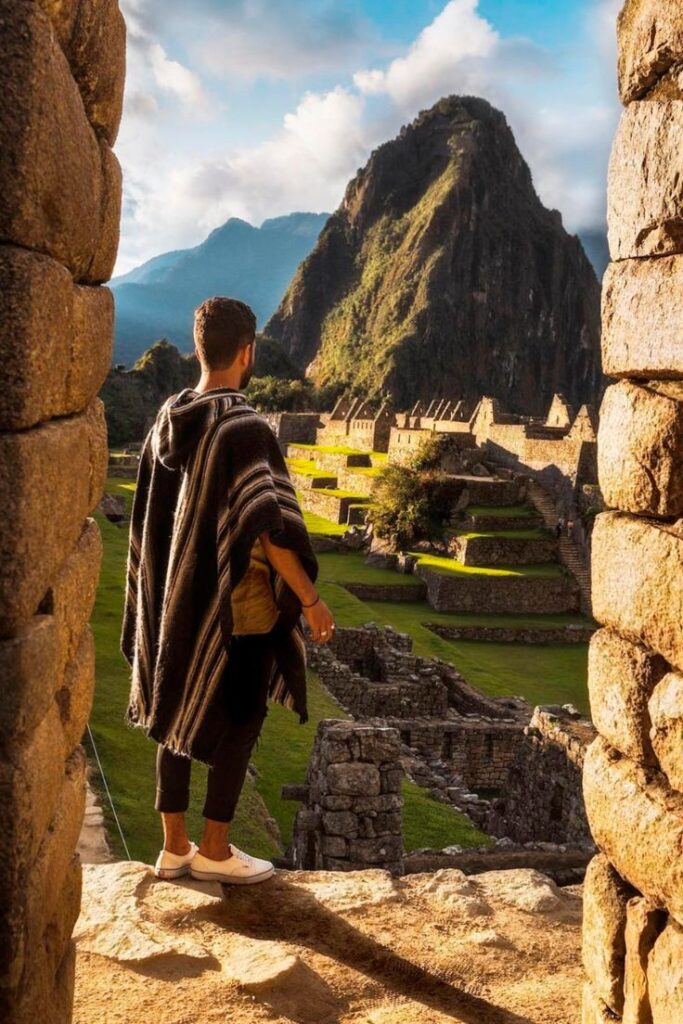

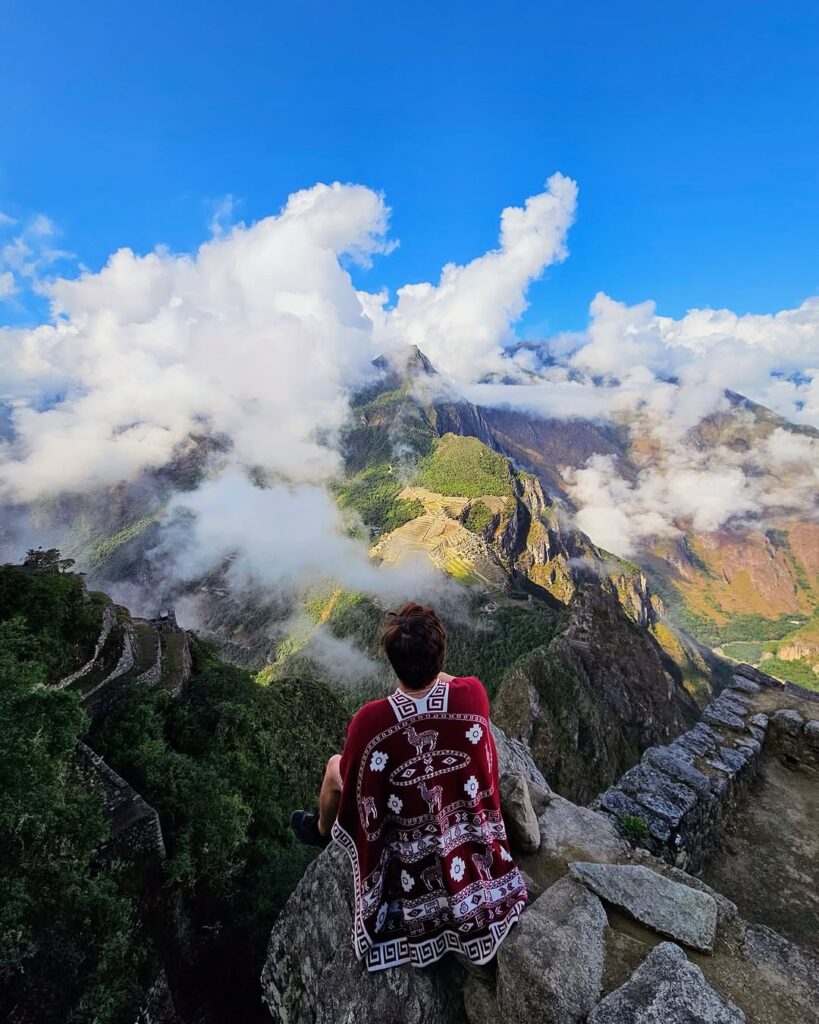
Huayna Picchu Mountain
At 2,693 meters (8,835 ft), Huayna Picchu is the most iconic mountain of Machu Picchu. Its name means “Young Mountain” in Quechua. Dominating the sanctuary’s postcard view, it was a sacred site for the Incas where religious ceremonies took place.
What to expect?
- A challenging but rewarding hike with steep stairs and narrow trails.
- Unique views of the citadel, the Urubamba Valley, and the surrounding mountains.
Regulations
- Only 350 visitors per day are allowed.
- Entry is restricted to visitors aged 12 years and above.
- Maximum exploration time: 6 hours.
Tips
- Reserve your ticket months in advance.
- Wear non-slip footwear, bring water, and carry a light jacket.
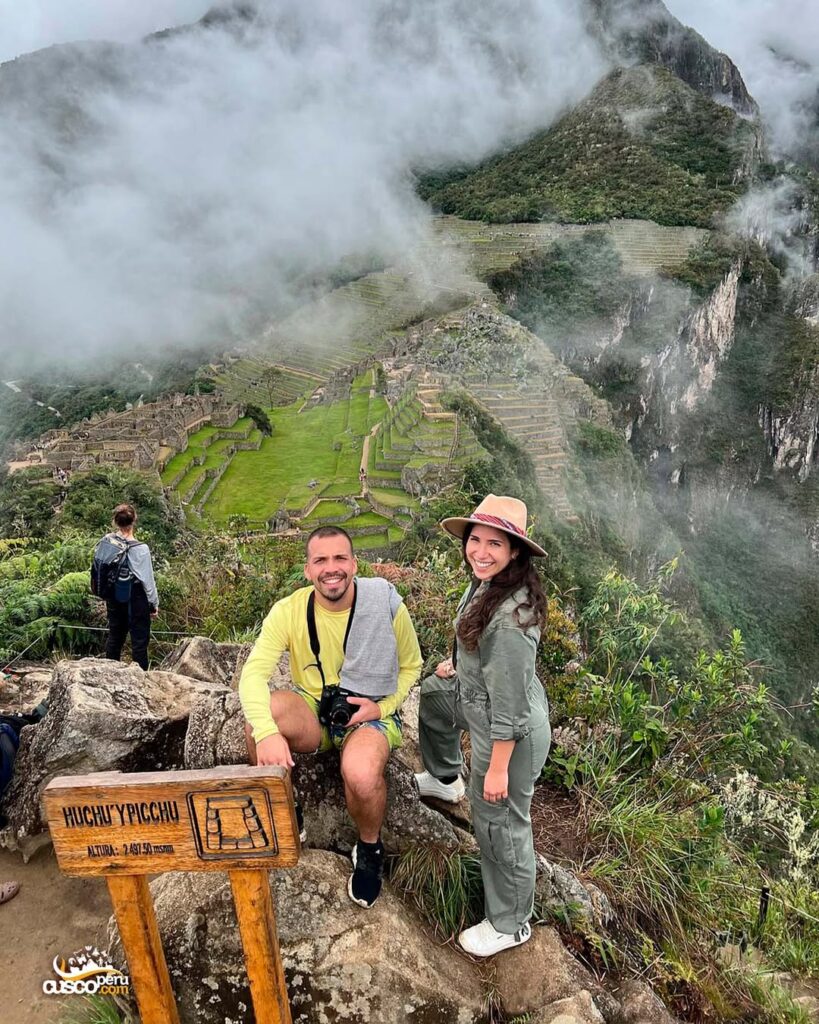


Huchuy Picchu Mountain
At 2,497 meters (8,192 ft), Huchuy Picchu is the smallest of the three sacred mountains, but no less impressive. Its name means “Small Mountain” in Quechua, and it offers a more intimate, less crowded experience.
What Makes It Special
- A short 1 km (0.6 mi) hike that takes about one hour.
- Stunning views of the citadel, Huayna Picchu, and the Intihuatana.
Regulations
- Only 50 tickets are available per day.
- Accessible only during the high season.
- Maximum exploration time: 3 hours and 30 minutes.
Tips
- Plan ahead to secure your spot..
- Bring insect repellent, water, and a camera to capture the views.
Best Time to Visit Machu Picchu Circuit 3 in 2026
The best time to explore Machu Picchu Circuit 3 is during the dry season (May to October), especially in May, June, and September. These months offer the ideal combination of pleasant weather, fewer visitors, and greater comfort for exploring. You’ll also have access to routes 3C and 3D (see the Ticket Availability by Season section).
The rainy season (November to April) also has its charm: the landscapes turn greener, the mist adds a mystical atmosphere, and there are fewer crowds. However, you must be prepared for rainfall and slippery trails. Waterproof clothing, proper footwear, and flexibility in your itinerary are highly recommended.
Summary Chart: Best Time to Visit Machu Picchu Circuit 3 in 2026
| Dry Season (May – October) | Rainy Season (November – April) | |
| Weather | Sunny days with temperatures ranging from 18°C (64°F) to 25°C (77°F). | Temperatures remain warm during the day, but can drop to 7°C (44.6°F)–12°C (54°F) at night. |
| Number of Tourists | High influx of visitors, up to 5,600 people per day. | Lower influx, up to 4,500 people per day. |
| Recommended Time to Visit | Take advantage of the early morning slots for each route to avoid crowds. | For available routes, mid-morning is the best due to clearer weather periods. |
| Landscapes | Clear panoramic views, ideal for photography. | Misty, mystical landscapes with lush vegetation. |
| Tourism Service Prices* | Accommodation, restaurants, and tours increase considerably. | Best deals and promotions available for hotels and packages. |
| Ticket Availability | Train tickets and entry passes sell out quickly. | Easier to find tickets for your desired date. |
*It’s important to note that Machu Picchu ticket prices do not increase, whether during high season or low season.
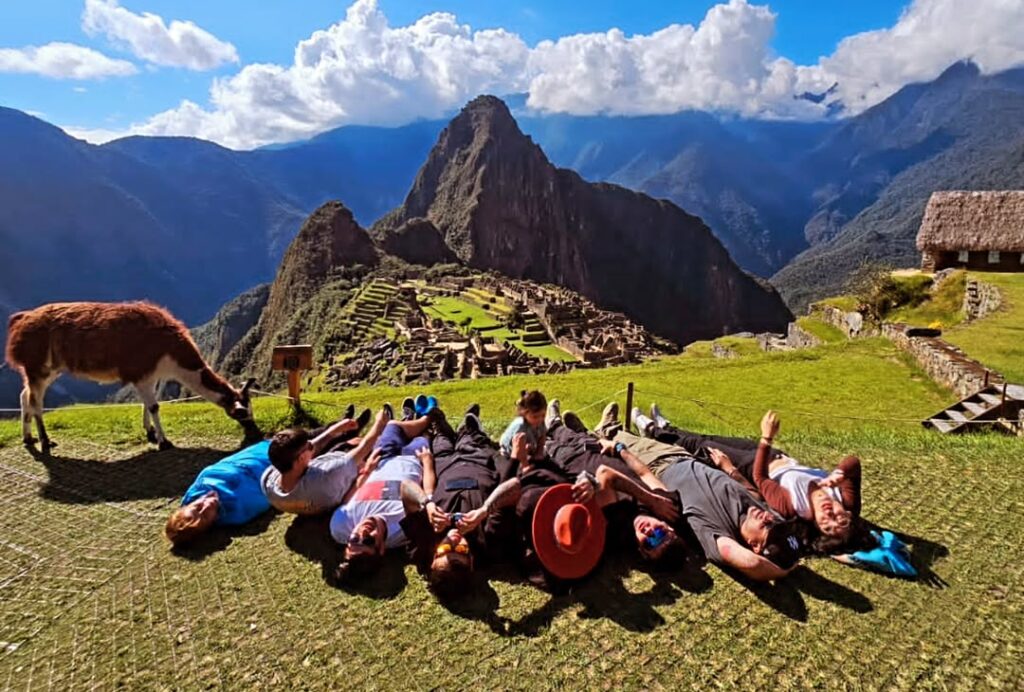
Ticket Availability by Season on Machu Picchu Circuit 3
Machu Picchu Circuit 3 offers four different routes, but not all of them are equally accessible. Only one (Route 3B) has wide availability year-round. The other three routes have more limited availability, and two of them (Routes 3C and 3D) are only available during the high season*.
For this reason, if you want to secure your entry, it is recommended to book at least 2 or more months in advance. Below, you’ll find ticket availability and entry schedules by season.
Important: The maximum capacity of Machu Picchu during high season is 5,600 visitors per day. In 2025, this attendance is allowed on the following dates: January 1, April 17–20, June 19 to November 2, and December 30–31.
Regular Season – Daily Capacity and Distribution
Schedules | Tickets | Circuit 3 Machu Picchu Royalty | |||||
| Route 3A | Route 3B | Route 3C | Route 3D | ||||
| Web | In person | Web | In person | ||||
06:00 a.m. | 60 | 50 | 10 | Only during high season | Only during high season | ||
07:00 a.m. | 260 | 50 | 10 | 150 | 50 | ||
08:00 a.m. | 60 | 50 | 10 | ||||
09:00 a.m. | 260 | 50 | 10 | 150 | 50 | ||
10:00 a.m. | 60 | 50 | 10 | ||||
11:00 a.m. | 60 | 50 | 10 | ||||
12:00 p.m. | 60 | 50 | 10 | ||||
01:00 p.m. | 60 | 50 | 10 | ||||
02:00 p.m. | 60 | 50 | 10 | ||||
03:00 p.m. | 60 | 50 | 10 | ||||
High season – Greater capacity and more options
Schedules | Tickets | Circuit 3 Machu Picchu Royalty | |||||
| Route 3A | Route 3B | Route 3C | Route 3D | ||||
| Web | In person | Web | In person | Web | Web | ||
06:00 a.m. | 85 | 75 | 10 | ||||
07:00 a.m. | 385 | 75 | 10 | 150 | 50 | 100 | |
08:00 a.m. | 85 | 75 | 10 | ||||
09:00 a.m. | 385 | 75 | 10 | 150 | 50 | 100 | |
10:00 a.m. | 105 | 70 | 10 | 25 | |||
11:00 a.m. | 70 | 60 | 10 | ||||
12:00 p.m. | 95 | 60 | 10 | 25 | |||
01:00 p.m. | 80 | 70 | 10 | ||||
02:00 p.m. | 80 | 70 | 10 | ||||
03:00 p.m. | 80 | 70 | 10 | ||||
How to Book Your Ticket for Machu Picchu Circuit 3 in 2026
If you’ve decided on Circuit 3 for your Machu Picchu visit in 2026, booking your ticket in advance is essential—especially during high season dates. Currently, there are four official ways to purchase your ticket. Below, we explain each option and how to choose the one that best suits you.
1. Advance Online Reservation (the most recommended option)
The most practical and reliable way to secure your Machu Picchu ticket is through the official website. This system allows you to book from anywhere with just a few clicks, guaranteeing your entry months in advance—something crucial during high season (May to October).
How to book?
- Step 1: Go to the official Machu Picchu portal or visit tuboleto.cultura.pe.
- Step 2: Fill in your details, choose the date, time, and type of ticket (Machu Picchu, Huayna Picchu, Mountain, etc.). You’ll receive a reservation code and an email with the payment link.
- Step 3: Make the payment.
Payment options
- Online card payment: The fastest and most convenient. The Ministry of Culture’s website only accepts Visa cards with verification.
- Banco de la Nación: Pay in cash at any branch within Peru.
- Cusco offices: You can also pay in person, with cash or card, at the Ministry of Culture office (Garcilaso Street s/n).
2. In-Person Purchase in Cusco (less recommended)
Another alternative is to buy your tickets directly at the Ministry of Culture offices in Cusco, located in Casa Garcilaso near Plaza Regocijo. While this may seem convenient, it’s not recommended since tickets often sell out quickly, leaving you at risk of not finding availability for your preferred date.
This method also requires extra time to travel and handle the process in person, which is inconvenient if you’re on a tight schedule. For that reason, it’s best considered only as a last resort if you couldn’t book online.
3. In-Person Purchase in Aguas Calientes (less recommended)
Tickets can also be purchased in person in Aguas Calientes at the Ministry of Culture office on Av. Pachacutec, near the Main Square. However, this option is not recommended either, as availability is very limited, especially during high season.
4. Through a Tour Operator (highly recommended)
If you want more convenience and peace of mind, booking through an authorized tour operator is one of the best options. Agencies like Salkantay Trekking take care of the entire process: ticket purchase, transportation, lodging, and even guides—turning your trip into a well-organized, hassle-free experience.
In addition, a tour operator often offers personalized packages, ranging from the classic Machu Picchu visit to Inca Trail treks or climbs to the nearby mountains. Just make sure to book in advance and verify that the agency is authorized and has good reviews. This way, you guarantee both safety and quality.
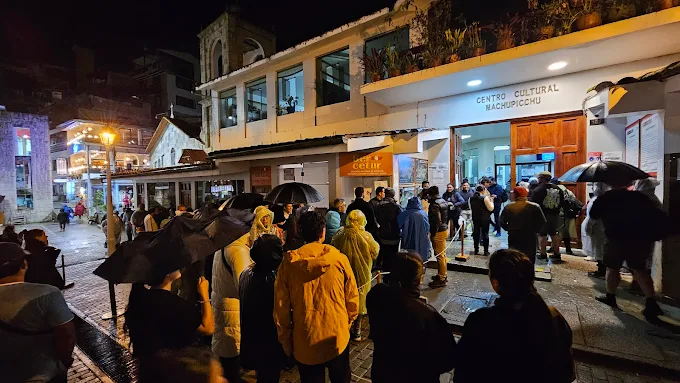
How to Get from Aguas Calientes to Machu Picchu?
If you’re already in Aguas Calientes (also known as Machu Picchu Town), the final stretch of your trip is reaching the entrance of the stunning Inca citadel. You have two main options: take the official tourist bus or challenge yourself with a demanding hike surrounded by nature.
1. Bus from Aguas Calientes to Machu Picchu
The Consettur tourist bus is the only authorized transportation that connects Aguas Calientes with the entrance gate to Machu Picchu.
- Travel time: 25 to 30 minutes
- Departures: every 5 to 10 minutes, starting at 5:30 a.m.
- Where to buy tickets:
- Online: on the official Consettur website.
- In person:
- Cusco: Av. Pardo Paseo de los Héroes 827, Cusco 08000.
- Aguas Calientes: Av. Hermanos Ayar S/N (antes del Puente Ruinas).
It’s best to buy your ticket in advance, especially during high season, to avoid long waiting lines.
2. Hike from Aguas Calientes to Machu Picchu
For those who love adventure, there’s also the option to hike up along a marked trail with stone stairways.
- Distance: over 8 km (5 miles)
- Elevation gain: 400 meters (1,300 ft)
- Difficulty: high, due to steep sections
- Estimated time: 1 hour 30 minutes to 2 hours, depending on your pace and fitness level
The trail begins at Puente Ruinas, just a few minutes from Aguas Calientes. Though challenging, this route allows direct contact with nature and offers an excellent experience for trekking enthusiasts.
Useful tips:
- Keep in mind that the effort may leave you a bit tired before exploring the citadel.
- Start early to make the most of daylight.
- Bring plenty of water, sunscreen, and proper hiking shoes.
Travel Tip: The best option is to go up by bus (30 min) and walk down (up to 2 hours). This way, you’ll save energy for exploring Machu Picchu and, if you plan to climb an additional mountain like Huayna Picchu, Huchuy Picchu, or Machu Picchu Mountain, you’ll avoid extreme fatigue.

Comparison of Circuit 3 Routes in Machu Picchu
Machu Picchu Circuit 3 offers four different routes, each with unique features that combine history, landscapes, and varying levels of physical challenge. To help you choose the option that best fits your time, fitness level, and interests, here’s a comparison chart highlighting the key differences and characteristics of each route.
| Feature Comparison | Route 3A – Huayna Picchu Mountain* | Route 3B – Designed Royalty | Route 3C – Great Cavern* | Route 3D – Huchuy Picchu Mountain* |
| Classic Photo Spot | Classic Circuit 3 photo near the urban area + panoramic view from the summit of Huayna Picchu | Classic Circuit 3 photo near the urban area | Classic Circuit 3 photo near the urban area + iconic shot at the Temple of the Moon | Classic Circuit 3 photo near the urban area + panoramic view from the summit of Huchuy Picchu |
| Distance | 2.4 km (1.49 mi) approx. | 1.3 km (0.81 mi) approx. | 3 km (1.86 mi) approx. | 1.7 km (1.06 mi) approx. |
| Duration | Max. 6 hours | Max. 2 hours 30 minutes | Max. 7 hours | Max. 3 hours 30 minutes |
| Difficulty | High | Low | High | Moderate to High |
| Terrain | Steep and narrow steps. 300 m (984 ft) ascent | Marked paths with some steps | Steep and narrow steps. 2-hour hike to reach the site | Uneven terrain with some steps |
| Ticket Availability | Sell out quickly; book 2+ months in advance | Wide availability, multiple time slots | Available only in HIGH SEASON; book 2+ months in advance | Available only in HIGH SEASON; book 2+ months in advance |
| Available Time Slots | 2 slots: 7:00 a.m. & 9:00 a.m.. | 10 slots: 6:00 a.m. – 3:00 p.m. | 2 slots: 7:00 a.m. & 8:00 a.m. | 2 slots: 10:00 a.m. & 12:00 p.m. |
| Recommended Age | 18+ with good physical condition | Suitable for all ages | 18+ with good physical condition | 18+ with good physical condition |
| Recommended Profile | Adventurous travelers who enjoy panoramic views and don’t mind a tough climb | Travelers seeking less physical effort and more cultural immersion | Panorama lovers who don’t mind a demanding trek | Adventurous travelers who enjoy panoramic views and don’t mind a tough climb |
| Archaeological Highlights | Temple of the Sun, Inca’s House, Ceremonial Fountains, Three Doorways sector, Huayna Picchu Mountain, Temple of the Condor | Temple of the Sun, Inca’s House, Ceremonial Fountains, Three Doorways sector, Temple of the Condor | Temple of the Sun, Inca’s House, Ceremonial Fountains, Three Doorways sector, Temple of the Moon, Temple of the Condor | Temple of the Sun, Inca’s House, Ceremonial Fountains, Three Doorways sector, Huchuy Picchu Mountain, Temple of the Condor |
*Important: If you chose the Huayna Picchu, Great Cave, or Huchuy Picchu routes, remember that the times indicated correspond to the entrance to the mountain, not the main entrance to Machu Picchu. Therefore, you must arrive at least one hour in advance at the entrance to the sanctuary, as you will first tour part of the citadel before beginning the ascent.
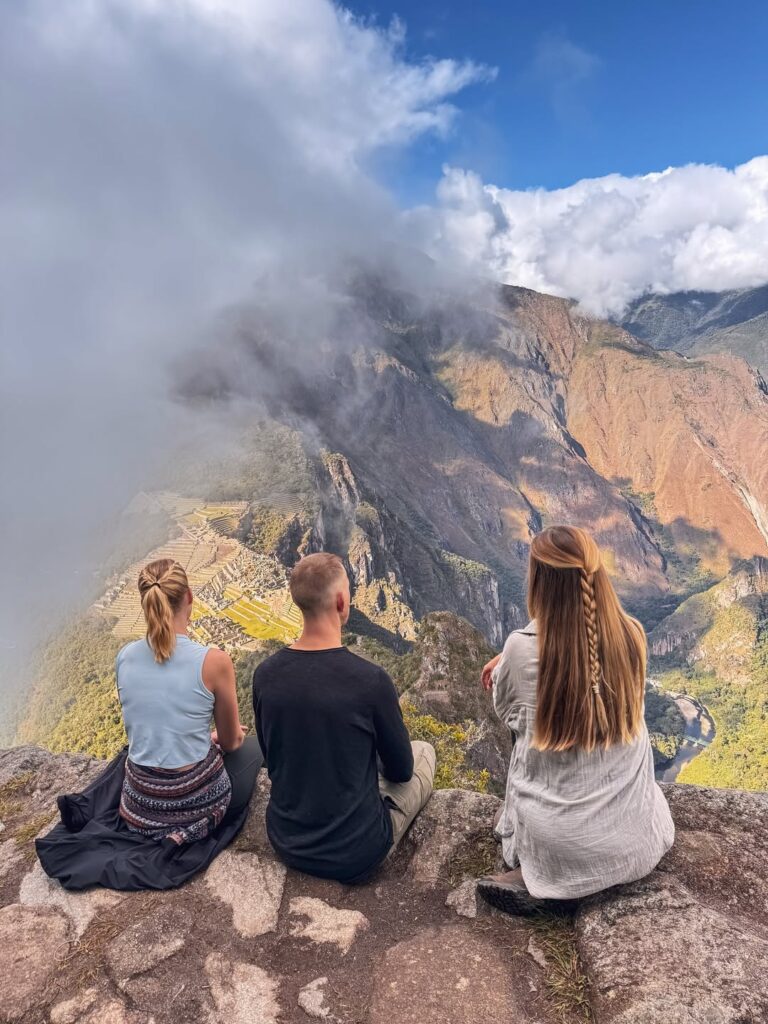

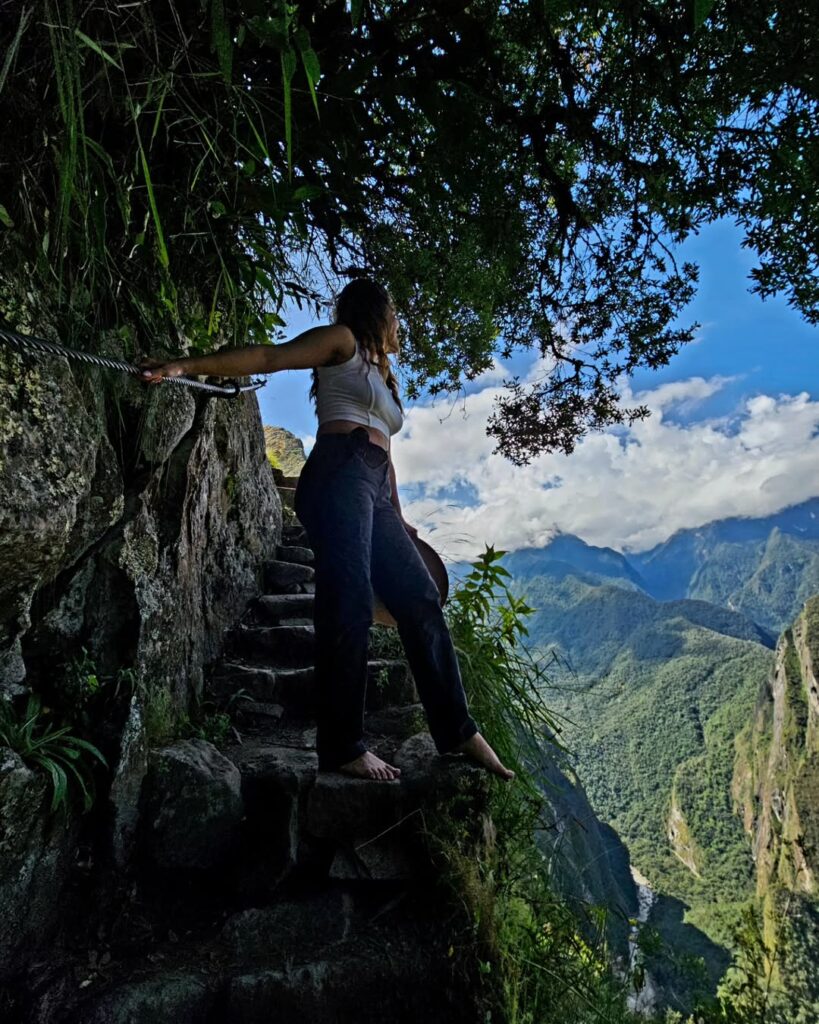
Other Machu Picchu Circuit Options
Didn’t manage to get tickets for Machu Picchu Circuit 3 on your desired date? Don’t worry, Circuit 1 and Circuit 2 are also incredible ways to explore the Wonder of the World.
Circuit 2 – Classic: Often considered the most complete option, this circuit takes you through the most emblematic areas of Machu Picchu, such as the Temple of the Sun, the Sacred Plaza, the Sacred Rock, and the Water Mirrors. It’s the best choice for travelers seeking deep cultural immersion, with access to a large part of the citadel and an unforgettable archaeological experience.
Circuit 1 – Panoramic: This route covers the upper part of the Inca citadel and offers the most iconic views. In addition to the classic postcard shot from the Guardian’s House, it allows you to explore terraces and less-crowded archaeological spots that are just as fascinating. Learn all the details in our complete guide to Machu Picchu Circuit 1.
Recommended Experiences to Complement Your Visit
After completing Circuit 3 Machu Picchu, you might still have a few hours before catching your return train—mainly if you chose the 3B Designed Royalty Route. That extra time is perfect to explore the attractions of Aguas Calientes, the charming town that serves as the gateway to the Inca citadel. Here are some experiences that will make your trip even more unforgettable:
Discover the Mandor Waterfall: Surrounded by lush vegetation, birds, and tranquility, this waterfall feels like a scene from a movie set in the heart of nature.
Climb Putucusi Mountain: An excellent adventure for adrenaline lovers. Enjoy a safe climb and a unique view of Machu Picchu from a rarely-seen perspective.
Relax in the hot springs: Unwind in the thermal pools of Machu Picchu Pueblo, with temperatures ranging from 100 °F (38 °C) to 114 °F (46 °C), perfect for recharging after your trek.
Explore the artisan market of Aguas Calientes: The ideal place to find authentic souvenirs handmade by local artisans.
Taste the local cuisine: Peru is renowned worldwide for its gastronomy—don’t miss the opportunity to try traditional dishes and flavors that delight every palate.
Visit the Manuel Chávez Ballón Museum: A must-see for those who want to dive deeper into Inca history through ceramics, textiles, tools, and archaeological pieces.
Explore the Butterfly House: Home to more than 500 recorded species, some endemic to the region, this place is a paradise for biologists and nature enthusiasts.
Stroll through the Machu Picchu Botanical Garden: Be amazed by its collection of over 123 species of orchids, out of the 425 registered in the Historic Sanctuary and Inca Trail.
Travel Tip: Learn more about activities in Aguas Calientes with our Guide to Machu Picchu Pueblo. If your schedule allows, we recommend spending one or two full days exploring the town’s hidden gems and falling in love with the cultural and natural richness surrounding Machu Picchu.
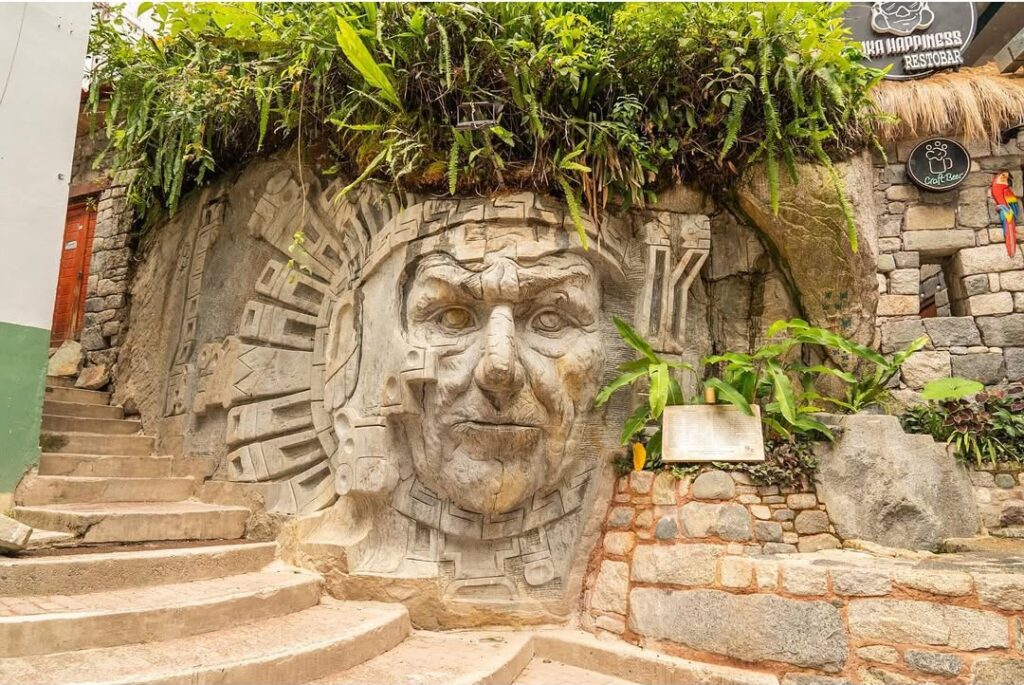

Ready to Live the Experience? Book your Machu Picchu Circuit 3 ticket with Peru Hike and secure your entry before spots run out. Don’t just read about it—discover it yourself from a unique and unforgettable perspective!

